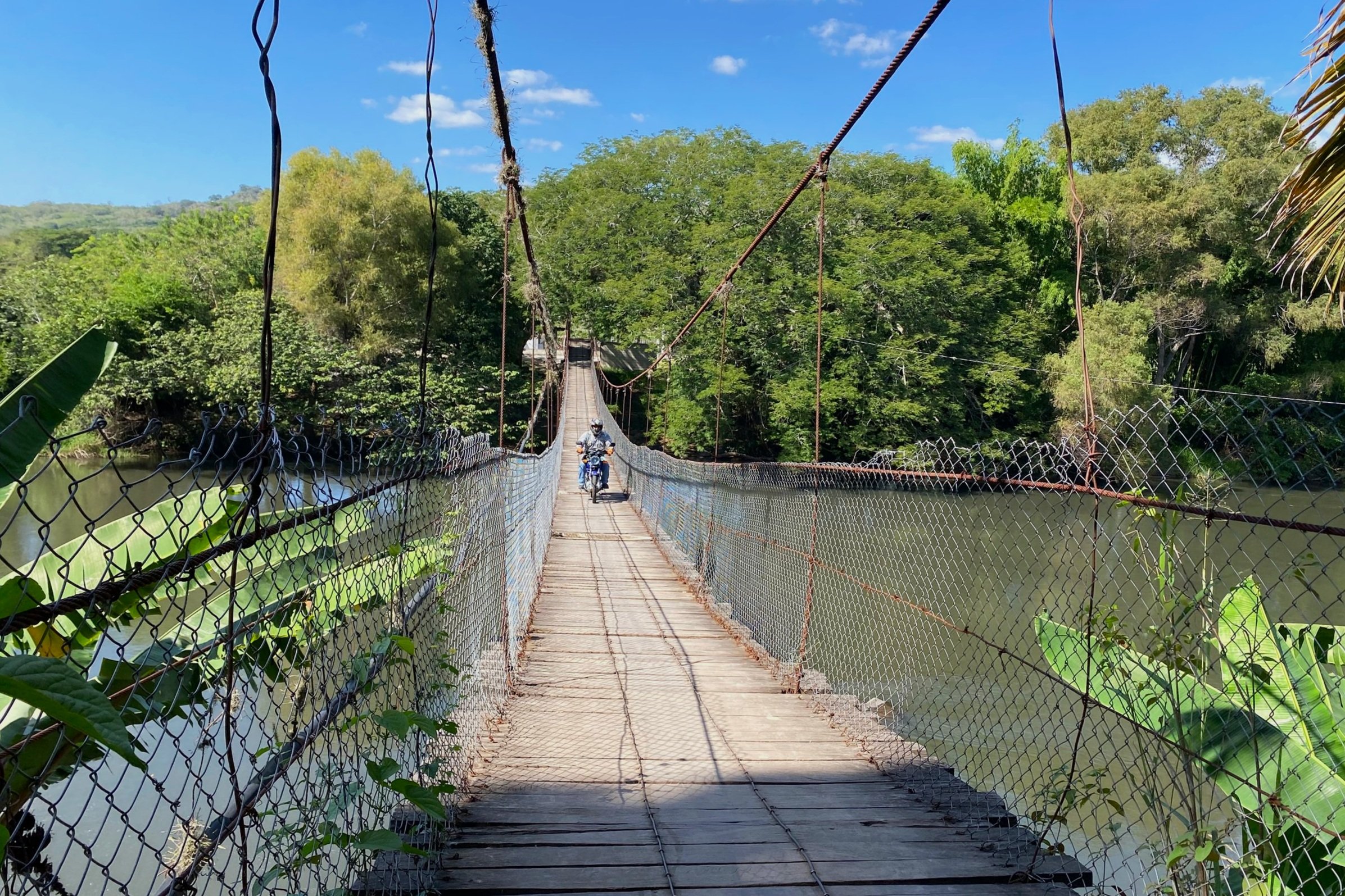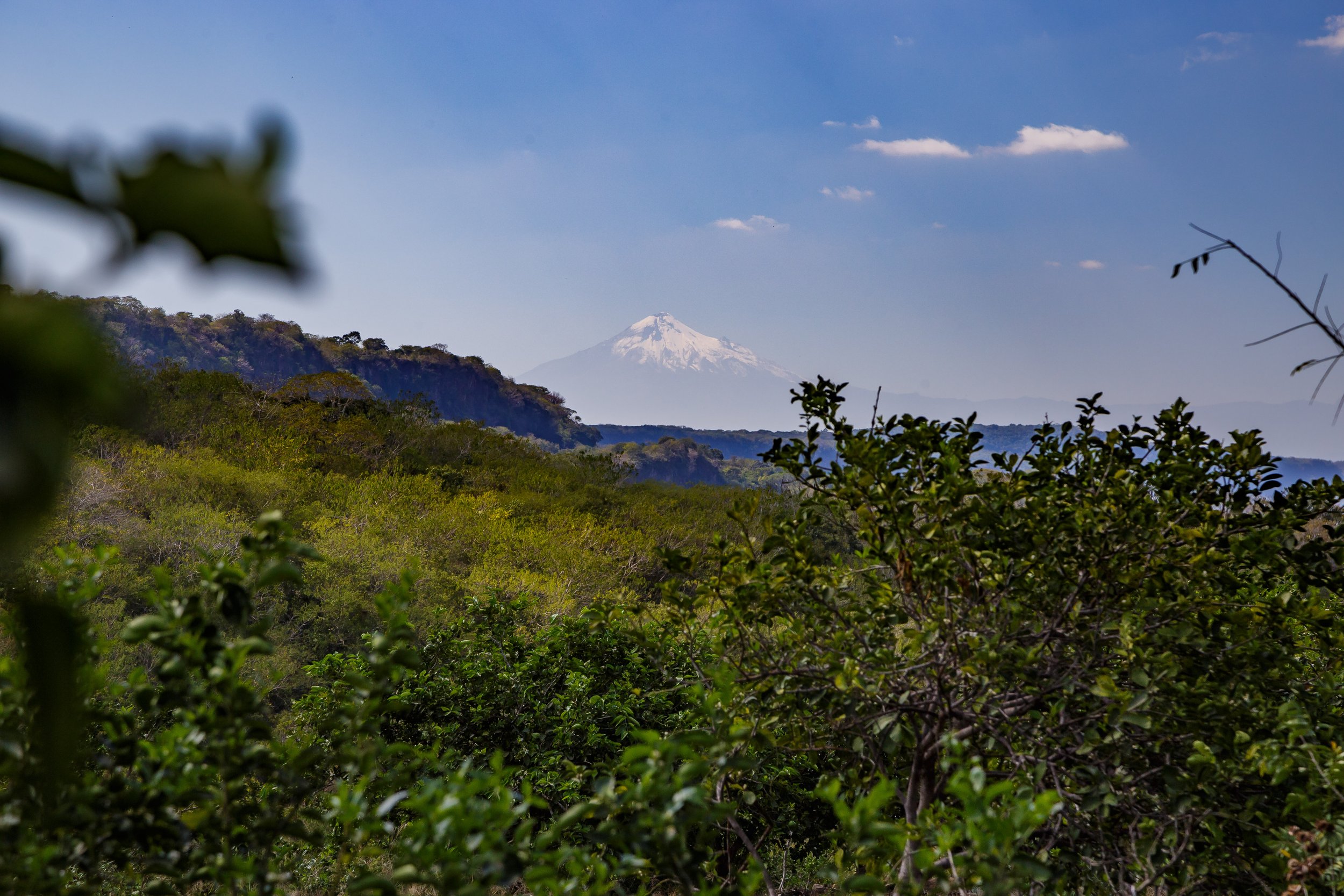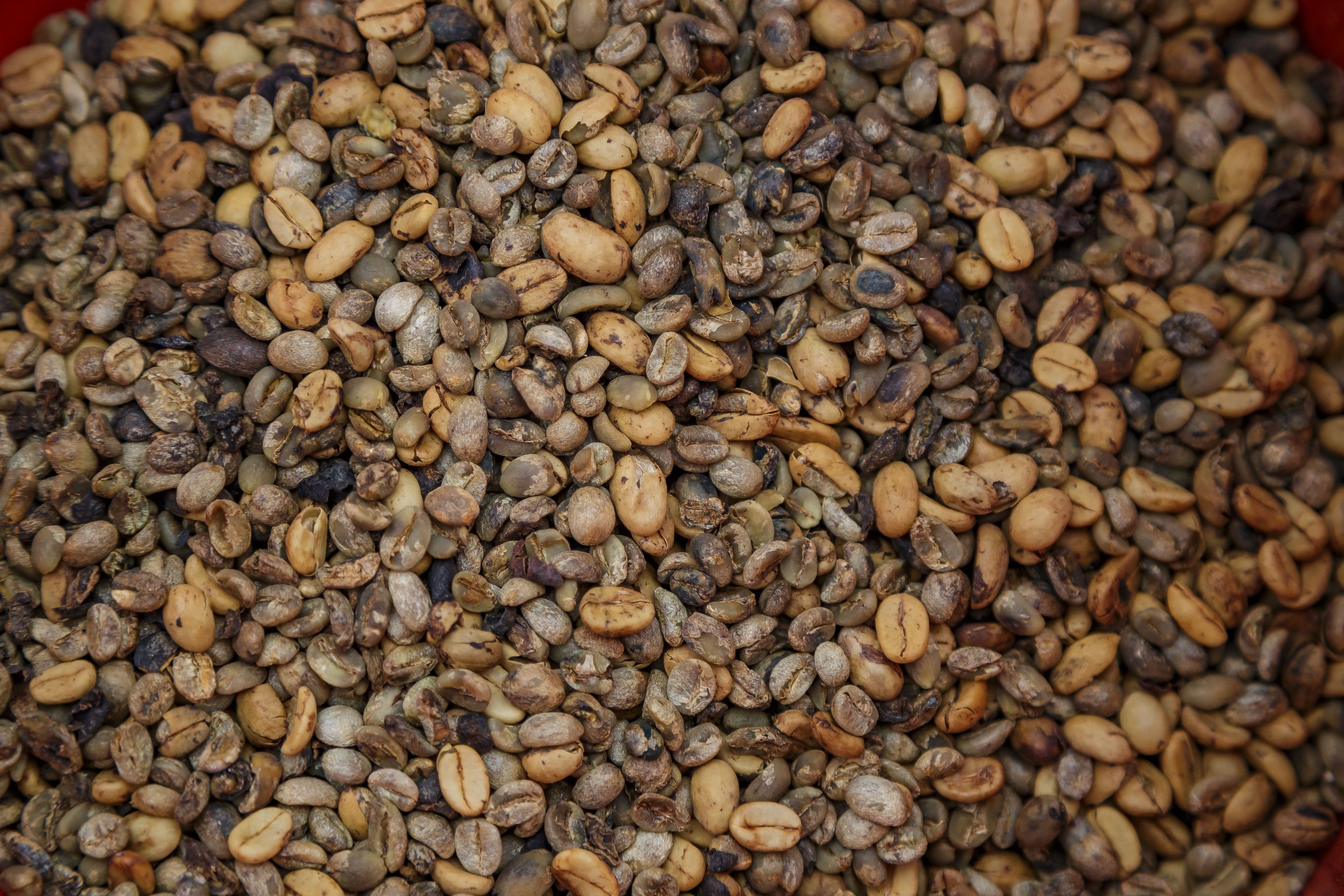The Jalcomulco Chronicles : From Beans to Brew, Learning about Harvesting and Roasting Coffee
/There’s something to be said about slowing your roll while traveling. So often, we find ourselves in towns and cities for only a day or two, and despite how many local taco spots you visit, you never truly get to know the rhythm and flow of a place before you hop back into the rolling home and move onto the next place. Because of Walter’s transmission problems, we had a great excuse to extend our previously planned month-long stay in Jalcomulco into a longer and more immersive visit. The next several blog posts will take a different form, focusing more on the things we learn and experience while in Jalcomulco versus a chronological retelling of our weeks. The first of these is all about coffee (and written by Chelsea, as Christian wasn’t really involved.)
We’re lucky enough to have rented a house right across the street from our good friend Oscar. This means we’re a mere whistle and wave away from being invited over for tasks that might seem mundane to him, but are interesting and educational for us. Oscar, while being a world class kayaker and raft guide, also owns a few plots of land just outside of his nearby hometown of Xotla. One of them is strictly for growing limes, which he sells on the local market, but the other, a riverside paradise with a small shelter, grill and treehouse, hosts a variety of fruits and vegetables that Oscar grows for his own personal use.
Among his many varieties of peppers, avocados, oranges, sugar cane, coconuts, bananas, papaya (and more) is a small patch of shade-grown coffee plants. Oscar isn’t a coffee drinker, but his wife Maria is, so it makes sense to grow their own, despite living only 40 kilometers from “La capital del café”, Coatepec.
It’s not unusual to walk the streets of Jalcomulco and see sidewalks in front of the houses covered in coffee beans, peanuts or pumpkin seeds, left out in the sun to dry. The agricultural background of the town, paired with the ease at which things grow here, makes it a perfect place for the locals to grow and harvest their own small batches of food for personal consumption. I’d always been curious about the process of coffee specifically, so I asked Oscar if he’d include me after seeing a tarp of drying beans in his driveway one day.
As luck would have it, on a day Christian wanted to go play on the river without me, Oscar told me he was heading to his farm to pick coffee, as the beans were ripe and needed to be harvested. (If coffee beans get left on the plant, it eventually dies, so you must pick the beans if you want the plant to live and keep producing). I excitedly hopped on the back of his motorcycle with a backpack and water bottle and we took off for a day at his farm.
After our mandatory consumption of a few coconuts worth of coconut water with lime, we got to work, picking through the dark green shrubbery to fill our buckets with the sticky red jewels. We tired of the task after a few hours, and despite seeing more plants ready to be harvested, we opted for a couple more hydrating coconuts instead and loaded up my backpack with the beans for the ride home.
Oscar taking a short cut to Pasa Limon over a cable bridge. If you look closely, you’ll see that there are wooden “Topes” or speed bumps on the bridge because it’s a regularly used route for local motorcyclists.
A view of Pico de Orizaba from the roads descending down into his farm.
The small plot of lime trees in the lower center is one of Oscar’s farms. You can see a large marble quarry on the ridgeline across the valley.
Oscar’s lower riverside farm. It’s a lime farm, but also home to many other fruits and plants that he grows for his own use, like coffee!
No day at Oscar’s farm is complete without coconuts.
He’s a whiz at cutting the coconuts open with his machete.
Can’t have coconuts without lime.
One of the many beautiful coffee plants ready to be harvested.
A close-up of the beans.
It can be tedious work, but by grabbing each branch with two hands, clearing the beans takes very little time.
The “husk” around fresh beans is soft and sticky. They’re pretty delicious to chew on and the husk has a sweet and ever so slight coffee flavor to it.
Oscar in his happy place…working on his farm.
Oscar made me give up the camera so he could get a few shots of me as proof that I also worked.
The next steps of the process are how Oscar and his wife Maria process the coffee, and not necessarily a universal technique, so keep that in mind.
Once the beans are home, they’re run through a hand grinder set to a very large setting. There is just enough pressure between the grinding wheels to break the juicy husks of the beans away for the next step of the process, which is drying. The mishmash of husks and beans are spread out into a single layer on a large mesh tarp to dry in the sun. It usually takes several days, as they want all of the moisture to be gone before the next steps.
Fresh picked beans after they were run through their grinder on a very loose setting so the beans stay intact, but the husks are loosened and broken away.
The beans/husks are laid out in the sun to dry for several days.
After drying for several days in the sun, the husks and beans are ready to be separated.
Once dry, the process of separating the beans from the husks begins. A large welded wire screen sifter is used first, with them rubbing the mixture over the grate, letting the smaller bits of broken up husks fall through. The remaining mix is put in a bucket, where Maria uses a fan to blow the lighter weight husks away while pouring the beans from one bucket to another. After several rounds of the fan technique, the beans are put on another flat surface and sorted by hand to pick out the rotten/bad beans.
Once the beans looks mostly clean and separated, a fire is started to roast them over a large ceramic plate. After the fire gets hot enough, Maria places a small batch of beans on the plate and stirs and flips them with a metal spoon as they roast. Once done, the roasted beans were scooped into a pot to cool before finally being put through the grinder.
Maria was gracious enough to share her final product with us, which certainly made our mornings a little more special as we enjoyed our locally harvested, organic, hand-roasted coffee.
Maria and Oscar use a homemade sifter to rub the beans/husks over to start the process of separating the beans and husks.
The small pieces of husks get broken up and go through the metal mesh, while the beans stay on top.
Maria uses a fan to blow the husks away from the beans.
The bucket is switched over and over as she lets the fan do the work.
Oscar continues to break up the husks while Maria uses a fan to blow the husks away from the beans.
One last sorting by hand to remove rotten beans from the mix.
A bucket of coffee beans, ready for roasting!
Oscar took this photo of Maria and I sorting the beans. Proof that I don’t just take photos…I also participate and help!
The dried coffee beans ready to roast.
One of their three beautiful cats kept watch over us while we worked.
Oscar starting a fire over the grill to roast the beans. Household grills are commonly made from all wood and then covered with a layer of fine sand. The fire is built on the sand to prevent it from burning through the bottom.
Maria roasts the beans by hand over a large ceramic platter (this platter is also her tortilla-making platter)
The smell was delightful.
Once the beans had a mostly even roast on them, she scooped them into a pot to cool.
Freshly roasted coffee beans!
One last sort through of the beans…anything that crumbled between her fingers got thrown out, as it was probably an old/rotten bean.
One last husk-removal session in front of the fan for all the pesky bits that made it through to the roasting stage.
The last step of the process…grinding the beans!


































